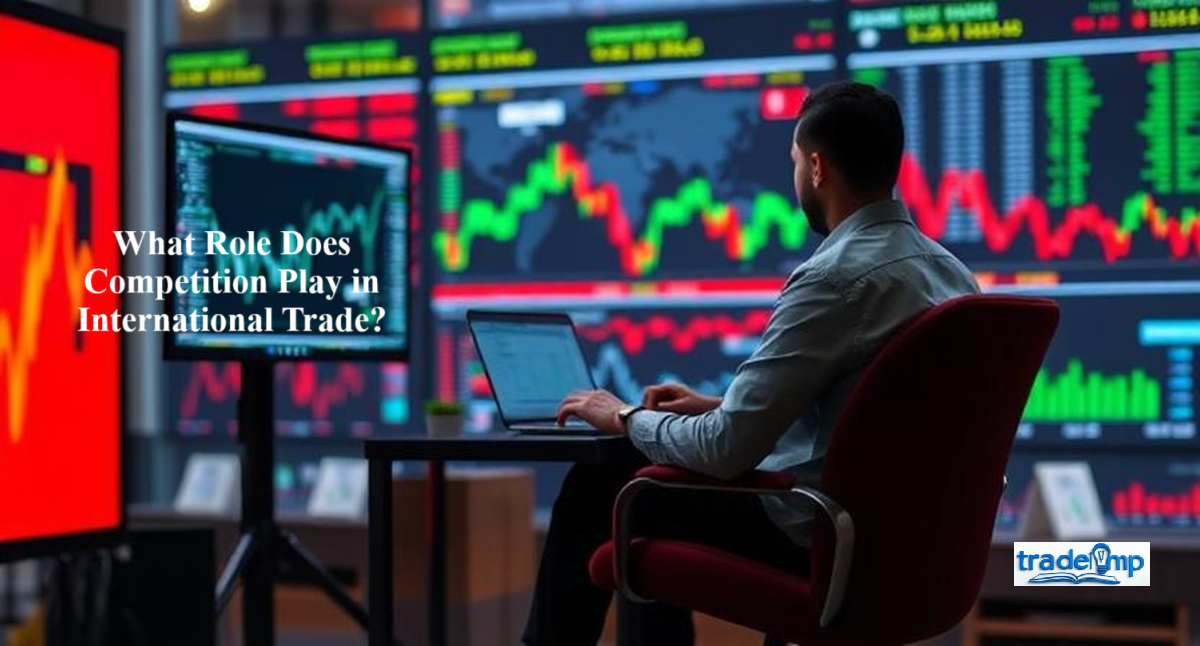Competition plays a vital role in shaping the global business landscape, influencing market structures, national policies, and economic development. From historical trade routes to modern-day supply chains and trade wars, competition has been a driving force behind international trade’s evolution. This blog delves into how competition affects international trade, exploring its benefits, challenges, and broader economic implications.
Understanding Competition in International Trade
In the context of global trade, competition refers to the rivalry between businesses, industries, or nations vying for a share of the international market. This competition manifests in various forms, including:
- Price Competition: Firms lower prices to attract consumers and gain market share.
- Quality Competition: Businesses differentiate their products through superior quality, durability, or design.
- Technological Competition: Companies innovate and develop new technologies to maintain a competitive edge.
Ultimately, competition fosters efficiency, innovation, and consumer benefits by ensuring the availability of diverse, high-quality products at competitive prices.
A Historical Perspective on Competition in International Trade
Understanding the role of competition in international trade requires a look at its historical development:
- Colonial Trade Era: During early global commerce, colonial powers dominated trade by establishing monopolies and restricting competition.
- Industrial Revolution: The advent of mass production and improved technology increased global competition, leading to an interconnected world economy.
- Post-World War II: The formation of institutions like the General Agreement on Tariffs and Trade (GATT) and later the World Trade Organization (WTO) promoted free and fair competition by reducing trade barriers.
Benefits of Competition in International Trade
Competition drives economic progress in multiple ways. Here are some of its key advantages:
- Increased Efficiency and Productivity
Competitive pressures push companies to optimize resource allocation, improve production processes, and reduce waste. This leads to higher productivity and economic growth.
Example: The rivalry between Volkswagen and BMW has led to continuous advancements in automotive safety features, fuel efficiency, and production techniques.
- Enhanced Innovation
Companies competing in global markets invest heavily in research and development (R&D) to gain an edge over rivals. This results in groundbreaking advancements in technology and product offerings.
Example: The competition between tech giants like Apple, Samsung, and Huawei has driven rapid innovation in smartphones, leading to better performance, design, and user experience.
- Lower Prices and Improved Quality
In competitive markets, firms strive to offer cost-effective products without compromising quality. This benefits consumers through lower prices and superior goods.
Example: The fierce competition between global retailers such as Walmart and Amazon has led to reduced prices and improved customer service.
- Greater Consumer Choice
Competition expands the range of available products and services, giving consumers access to diverse options that suit their preferences.
Example: International trade has made exotic foods, foreign automobiles, and high-tech gadgets accessible to consumers worldwide.
The Role of Government Policies and Regulations
Governments shape international competition through various policies and regulations:
- Trade Agreements and Tariffs
Governments negotiate trade agreements to promote free trade and reduce barriers. However, they may also impose tariffs and trade restrictions to protect domestic industries.
Example: The North American Free Trade Agreement (NAFTA), later replaced by the United States-Mexico-Canada Agreement (USMCA), facilitated competition by lowering trade restrictions between the three countries.
- Antitrust and Competition Laws
To prevent monopolies and promote fair competition, governments enforce antitrust laws that regulate mergers and market practices.
Example: The European Union’s competition policy ensures that large corporations do not engage in anti-competitive behaviors that stifle market entry and innovation.
- Support for Small and Medium Enterprises (SMEs)
Governments implement policies to help SMEs compete in international markets by providing financial aid, reducing regulatory burdens, and supporting R&D.
Example: The European Union’s Horizon 2020 initiative funds research and innovation to enhance SMEs’ global competitiveness.
The Future of Competition in International Trade
As globalization continues to evolve, the nature of competition will be shaped by several emerging factors:
- Digital Transformation and E-Commerce
The rise of digital platforms has intensified competition, enabling businesses to reach global consumers more easily.
Example: Companies like Alibaba and Shopify have revolutionized international trade by providing digital marketplaces for businesses worldwide.
- Sustainability and Ethical Competition
Consumers are increasingly prioritizing sustainable and ethical business practices. Companies must adapt to these changing preferences to remain competitive.
Example: The growing demand for eco-friendly products has encouraged companies to adopt green supply chains and sustainable manufacturing processes.
- Geopolitical Tensions and Trade Wars
Trade disputes and protectionist policies can significantly impact international competition, altering supply chains and market dynamics.
Example: The U.S.-China trade war has led to increased tariffs, affecting global supply chains and shifting trade alliances.
Wrapping Up
Competition plays a crucial role in international trade, driving efficiency, innovation, and consumer benefits. However, it also presents challenges such as trade disputes, market volatility, and regulatory complexities. As global markets continue to evolve, businesses and governments must adapt to new competitive landscapes shaped by digital transformation, sustainability concerns, and geopolitical factors.
Ultimately, while competition fuels economic growth, it must be balanced with fair trade practices and regulatory oversight to ensure long-term stability in global commerce.




